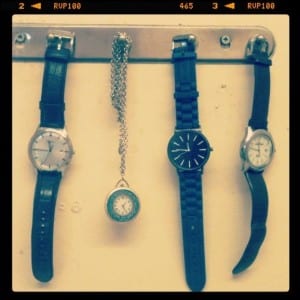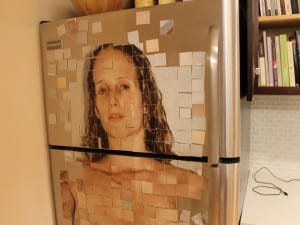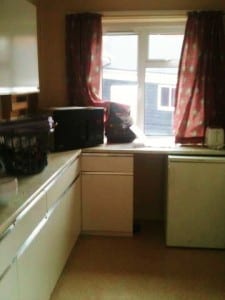“Non-acting can be understood as functioning in the tradition of the modernist avant-garde in that it is not a mimetic practice that seeks to represent a fictional character, but a reframing of reality that seeks to blur the boundaries of art and life.” ((Govan, Emma, Helen Nicholson and Katie Normington (2007) Making a Performance, Devising Histories and Contemporary Practices Oxon and USA: Routledge, pp.59-60))
For the past few weeks we have had a lot of different ideas about what is associated with the kitchen and how we can create a performance with it. I have discussed changing the function of the kitchen and playing with how long things take to make. But how can you link these ideas together to make an interesting performance, capturing the audience’s attention and creating something they have never seen before? The answer I found to this, it seems, is in the shape of a giant white rabbit costume.
“Oh dear! Oh dear! I shall be too late!” ((Carroll, Lewis (1940) Alice’s Adventures in Wonderland, USA: The Colonial Press Inc. p.4))
The White Rabbit from Alice’s Adventures in Wonderland written by Lewis Carroll, is the character inviting Alice in, which is what I will be doing with my audience. The idea of time links to The White Rabbit as he is always checking his pocket watch and conscious of being late. The kitchen in our West Parade house has several hooks on the walls in which I thought I could hang a variety of different wrist watches and pocket watches to accentuate the theme of time.
Photo taken: 08/02/2013 – ‘Time’
As for purpose, an idea that I very much want to experiment with would be to set up a dining table outside in the back garden which could perhaps link to the ‘mad tea party’ scene in the book. I like the notion of filling the kitchen cupboards with items that aren’t associated with a kitchen. The idea that things are where they don’t belong I find very interesting, which links to the fact that there is a person dressed as a rabbit in a kitchen – it shouldn’t be there. This sense of dislocation is extremely relevant to this performance and the notion of things being where they shouldn’t and disturbing the norm of that space. Adding to this, the concept of ‘non-performing’ would be apparent as I wouldn’t be acting as if I am The White Rabbit from the book, I wouldn’t be acting like a rabbit at all, I am just Libby who happens to be wearing a bunny costume which again emphasises the notion of dislocation. In Making A Performance it questions how the company, Reckless Sleepers, portray ‘non-performing’ in their devised performance of The Last Supper; “Are the actors themselves? (They are named as such in the script.) Are they invented personas? Are they momentarily representations of the people whose words they speak?” ((Govan, Emma, Helen Nicholson and Katie Normington (2007) Making a Performance, Devising Histories and Contemporary Practices Oxon and USA: Routledge, p.115))
Something I will be experimenting with now will be exploring different conversational topics and how to react if an audience member asks; ‘why are you dressed as a rabbit?’. “Theatre practitioners need to acknowledge that participation can be profoundly disturbing; that it may involve making ourselves vulnerable as we open ourselves to unexpected experiences and outcomes.” ((Freshwater, Helen (2009) theatre & audience, London: Palgrave Macmillan, p.76))
Do I acknowledge that I am dressed in a giant rabbit costume or not? Do I notice that there is no possible way to pour a cup of tea with my big fluffy paws without spilling it, or do I treat the situation as if I’m not wearing the costume at all? Time shall tell.



